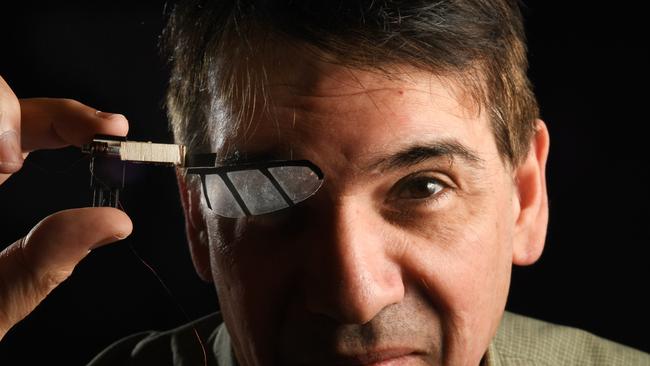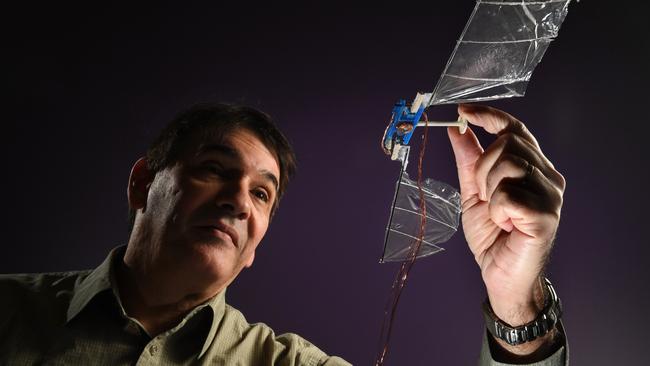UniSA drone research yields swift birdlike prototype
We’re becoming used to drones flying like miniature helicopters – but these ones, being researched here, will fly like one of the world’s fastest birds.
- Coronavirus: How drones could detect COVID-19 infections
- UniSA system to detect fall victims and dispatch first aid drones
- Drone picture special: SA from above
- How to get the most out of your Advertiser subscription
A new type of drone modelled on one of the world’s fastest birds – the swift – can hover, dart, glide, brake and dive, making it more versatile, safer and quieter than the typical “quadcopter” drones.
UniSA aerospace engineer Javaan Chahl says he’s fascinated by flight, particularly birds and insects such as dragonflies.
“Our collective interest is taking biology and trying to turn it into engineering solutions,” he said.
“We look in depth at the animal and then try to work out really what are the fundamental principles there and then try to replicate those principles, which is different to just trying to make it look about right.”
A birdlike drone with flapping wings is known as an “ornithopter” – as opposed to the quadcopter, which has four rotors.
Earlier ornithopter designs were too inefficient and slow to be agile, so the latest prototype is a major advance.

“Flapping wings can lift like an aeroplane wing, while making thrust like a propeller and braking like a parachute,” Professor Chahl said. “We have put this together to replicate the aggressive flight patterns of birds by simple tail control.”
UniSA research on a prototype, with partners in Singapore, China and Taiwan, is published today in the journal Science Robotics.
Lead author, Dr Yao-Wei Chin from the National University of Singapore, says possible applications include surveillance, pollination of indoor vertical farms, or pest bird control at airports.
“The optimised ornithopter acts as a kind of scarecrow, greatly saving on labour costs for pest control companies and airport operators,” Dr Chin said.
As the new breed of ornithopters can now produce enough thrust to hover and to carry a camera and accompanying electronics, the flapping wing drone could be used for crowd and traffic monitoring, information gathering and surveying forests and wildlife.
The light weight (26g) and the slow beating wings of the ornithopter poses less danger to the public than quadcopter drones in the event of a crash and given sufficient thrust and power banks it could be modified to carry different payloads depending on what is required.
While the latest prototype is impressive, the team acknowledges plenty of room for improvement.

“Although ornithopters are the closest to biological flight with their flapping wing propulsion, birds and insects have multiple sets of muscles which enable them to fly incredibly fast, fold their wings, twist, open feather slots and save energy,” Dr Chin said.
“Their wing agility allows them to turn their body in mid-air while still flapping at different speeds and angles. Common swifts can cruise at a maximum speed of 31 metres a second, equivalent to 112 kilometres per hour.”
Real birds may not welcome the presence of these new birdlike machines. While small, domesticated birds are easily scared by drones, large flocks and much bigger birds have been known to attack.
Professor Chahl says that when drones start to compete with birds for air space we will find how territorial and angry they can become.
“I expect these things will be endlessly harassed in Australia with our magpies, crows and wedgetailed eagles,” he said.
“We get that with our fixed wing drones up in the desert.”

